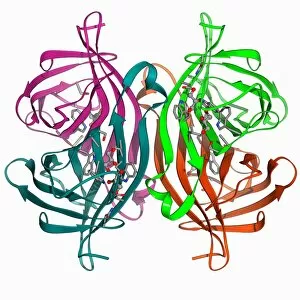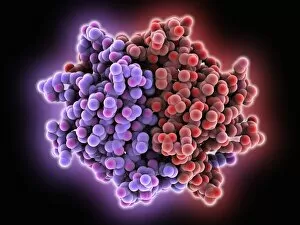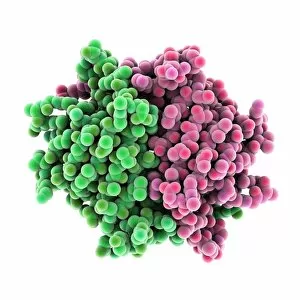Streptavidin Collection
Streptavidin, a versatile protein commonly found in bacteria, plays a crucial role in various scientific applications
All Professionally Made to Order for Quick Shipping
Streptavidin, a versatile protein commonly found in bacteria, plays a crucial role in various scientific applications. One of its notable functions is forming the Streptavidin-biotin molecular complex, which has revolutionized many fields. The Streptavidin-biotin molecular complex refers to the strong interaction between streptavidin and biotin molecules. This binding affinity is one of the highest known in nature, making it an invaluable tool for researchers worldwide. Streptavidin itself exists in different forms such as Streptavidin bacterial protein F006 / 9654 and Streptavidin bacterial protein C015 / 8458. These variants possess slight differences but share the same fundamental properties that make them ideal for scientific investigations. Scientists exploit this natural bond by using streptavidins to detect or immobilize specific molecules of interest. By attaching biotins to target molecules, they can easily bind them with streptavidins and subsequently study their behavior or analyze their presence within biological systems. Moreover, the Streptavidin-biotin molecular complex finds extensive use in techniques like immunohistochemistry and Western blotting. In these methods, streptavidins act as powerful detection agents due to their ability to bind tightly with biotinated antibodies or other biomolecules labeled with biotins. This remarkable affinity also enables researchers to design innovative drug delivery systems. By conjugating therapeutic compounds with biotins and utilizing targeted strepavidsn carriers, drugs can be efficiently delivered specifically to desired cells or tissues while minimizing off-target effects. Furthermore, scientists are constantly exploring new ways to enhance the capabilities of this molecular duo. They modify both strepavidsns and biotins through chemical engineering approaches to improve stability, specificity, and sensitivity for even more precise applications across diverse research areas including diagnostics, bioengineering, and nanotechnology.




